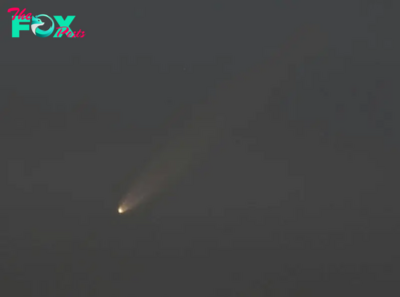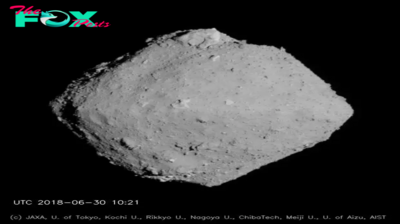Science
Explosive black hole flare from the center of our galaxy reconstructed from 'a single flickering pixel' using AI and Einstein's equations
Scientists have used artificial intelligence to construct a three-dimensional model of an energetic outburst, or flare, that occurred around the Milky Way's central black hole, Sagittarius A* (Sgr A*). This 3D model could help scientists develop a clearer picture of the tumultuous environment that forms around supermassive black holes in general.
The material swirling around Sgr A* exists in a flattened structure called an "accretion disk" that can periodically flare. These flares occur across a range of light wavelengths, all the way from high-energy X-rays to low-energy infrared light and radio waves.
The supercomputer simulations suggest a flare seen by the Atacama Large Millimeter/Submillimeter Array (ALMA) on April 11, 2017 originated from two bright spots of dense material in Sgr A*'s accretion disk, both of which were facing Earth. Those bright spots swirl around the supermassive black hole, which has a mass around 4.2 million times that of the sun, while separated by around half the distance between the Earth and the sun. That's around 47 million miles (75 million kilometers).
Reconstructing these flares in 3D from observational data is no mean feat. To tackle this, the team, led by California Institute of Technology scientist Aviad Levis, proposed a new imaging technique called "orbital polarimetric tomography." The method is not unlike medical computed tomography, or CT, scans carried out in hospitals around the globe.
"The compact region around the galactic center is an extreme place where hot, magnetized gas orbits a supermassive black hole at relativistic velocities [speeds approaching that of light]. This unique environment powers highly energetic eruptions known as flares, which leave observational signatures at X-ray, infrared and radio wavelengths," Levis told Space.com. "Recently, theorists proposed several mechanisms for the emergence of such flares, one of which is through extremely bright, compact regions that suddenly form within the accretion disk."
The key result of this work, he added, is the recovery of what the 3D structure of radio brightness around Sgr A* might look like directly after a flare detection.
Related: Supermassive black hole at the heart of the Milky Way is approaching the cosmic speed limit, dragging space-time along with it
-

 Science3d ago
Science3d agoWhy Risky Wildfire Zones Have Been Increasing Around the World
-

 Science3d ago
Science3d agoIt’s Time to Redefine What a Megafire Is in the Climate Change Era
-

 Science4d ago
Science4d ago4 Astronauts Return to Earth After Being Delayed by Boeing’s Capsule Trouble and Hurricane Milton
-

 Science5d ago
Science5d agoThe Elegance and Awkwardness of NASA’s New Moon Suit, Designed by Axiom and Prada
-

 Science1w ago
Science1w agoSpaceX Launches Its Mega Starship Rocket. This Time, Mechanical Arms Catch It at Landing
-

 Science3w ago
Science3w agoYou Won’t Want to Miss October’s Rare Comet Sighting. Here’s How and When You Can See It
-

 Science1m ago
Science1m agoA New Spacecraft Could Help Determine if There’s Life on a Moon of Jupiter
-

 Science1m ago
Science1m agoWe Can Thank Deep-Space Asteroids for Helping Start Life on Earth



























